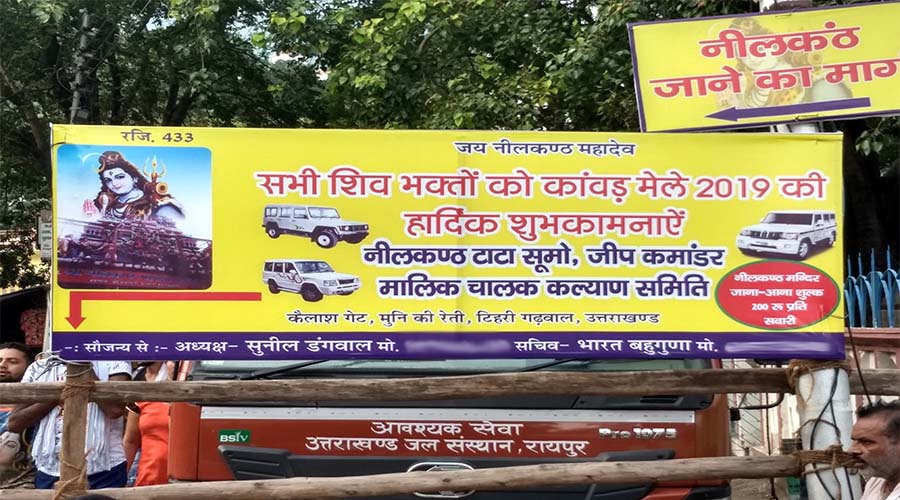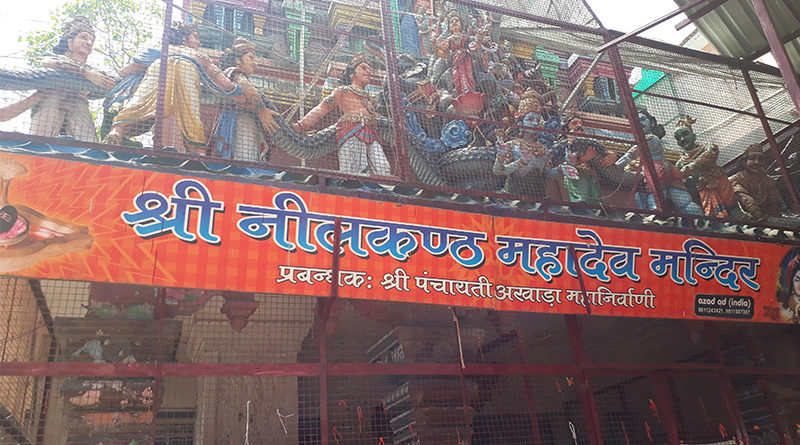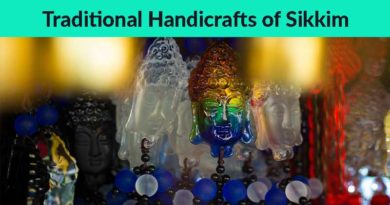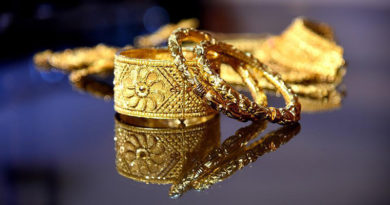All about Neelkanth Mahadev Temple: Complete Travel Guide
Every year millions of tourists visit Neelkanth Mahadev Temple, and their numbers are bound to increase every year. And why not? Consecrated as a holy pilgrimage site in the magnificent hills of the Himalayas, which calls up most Shiva devotees to visit for a yearly pilgrimage to Neelkanth Mahadev Mandir in Rishikesh known as Kanwar Yatra.
Interestingly enough ancient engravings of Samudra Manthan which happen between gods and rakshasas (Evil/Demons) are beautifully depicted above the entrance door of the temple, and the whole story is engraved on the ancient walls of the temple. The magnificent architecture of the temple gives a divine feeling to the soul. The natural spring inside the temple compound is considered sacred and devotees take bath in it for spiritual cleansing before visiting the sacred main chamber where the Shivalinga (phallic form of Lord Shiva) is situated.
A very common practice among the devotees is to bind a thread around the famous and cosmic peepal tree (Sacred Fig Tree), which is considered as a way of conveying prayers to Lord Shiva. And on the fulfilment of their prayers, devotees revisit the temple to untie the thread. Maha Shivratri is the busiest day of the year for the temple as on this day devotees visit the temple to worship and offer milk, honey, fruits, beagle leaves, coconut and flowers to the supreme lord of the universe Neelkanth Mahadev.
Neelkanth Mahadev Story and History
Drinking of deadly poison by Neelkanth Mahadev is a significant gesture by God Shiva telling humankind that he is always present to guards us against all threats, and we humans don’t need to stifle or respond to the indecencies and negativity in the world.
Churning Of the Ocean/Samudra Manthan
To understand the deep meaning of Neelkanth story one must know about Samudra Manthan. According to ancient religious scripts, one time the King of Gods Indra met a holy man known as Druvasa rishi. Who offered Indra a garland and Indra put it on the ivory of his elephant. The elephant got irritated by its smell and threw the garland on the ground. This enraged Druvasa Rishi as the garland was supposed to be treated as a blessing (sri) and not to be thrown away. Fuelled with all the rage Durvasa Rishi cursed Indra and all gods to be deprived of all the strengths, energy, and fortune they have. Entrapping this opportunity one rakshasa (Evil/Demons) king named Bali captured heaven and started controlling the universe.
After the defeat by demons, helpless Indra went to seek help from Lord Vishnu to get him restored as the king of gods. Vishnu told Indra that for him and all the gods who lost their powers because of the curse of Durvasa Rishi. They could regain their powers back if they can manage to bring out the magical drink (amrita) from the depths of the milky ocean by churning the ocean. Only after consuming Amrita gods could regain their powers. This great churning of the Milky Ocean (Now known as the Indian Ocean) is known as Samudra Manthan. But because the gods were powerless now, they needed the help of rakshasas (Evil/Demons) to accomplish this colossal task.
HALAHAL: How Lord Shiva Became Neelkanth
As the churning of the ocean began, an extremely poisonous drink called halahal immerged from the ocean. The gods and demons became scared of this poison because this blue drink was very lethal. And any creation who would interact with it started to die.
Concerned with how lethal this poison is Lord Brahma and Vishnu along with gods and demons all got together and prayed to Shiva to control and process the poison which was so fatal for the entire universe. Out of compassion for living beings and to help gods, Lord Shiva agreed to take the responsibility to save the entire universe. Shiva appeared before everyone and drank the entire poison.
Goddess Parvati’s Role to Save Lord Shiva from the Poison
Goddess Parvati was concerned with the poison being spreading very fast. So she took the form of Mahavidya and entered Lord Shiva’s throat and limited the poison to his throat so that the poison does not reach his stomach. Making Lord Shiva unharmed by the effects of poison. However, the poison changed the colour of Lord Mahadeva’s throat to blue. That is how Lord Shiva became to be known as Neelakantha (the blue-throated one) where ‘Neela’ means blue and ‘Kantha’ means neck or throat.
Worried about the health of lord Shiva, gods decided to keep him awake during that night. To attain this gods performed dances and played music in front of Lord Shiva to amuse him and in turn, keep him awake during that night. The next morning, Lord Shiva who was pleased with their devotion blessed everyone. That’s why Lord Shiva is worshiped by demons also.
The day when Neelkanth Mahadev saved the entire universe is celebrated as Maha Shivaratri. Since ancient times on this day and night – Mahadev (Shiva) devotees practice fasting, sing songs in glory (Bhajans) of Neelkanth Mahadev and also meditate as a religious observance.
How to Reach: Neelkanth taxi fare
Neelkanth Mahadev temple is situated at a comfortable distance of 32 km from Rishikesh. Taxis are available from the taxi stand at Swargashram Gaddi at Ram Jhula for a nominal charge of Rs. 200/- each for going up and coming back down. Many pilgrims prefer to take a 22 Km trek to the temple to observe the incredible natural landscapes. The trek takes around 4 hours from Ram Jhula, Rishikesh. The Nearest Railway station to Neelkanth is Rishikesh Railway Station and the Nearest Airport is Jolly Grant Airport.

The way to Neelkanth temple is surrounded by dense forests, beautiful Himalayan hills, and rivers. Surrounded by Manikoot, Vishnukoot and Brahmakoot valleys, Neelkantha Mahadev Temple is at a height of 1675 meters from Sea level. For people who are seeking adventure the way to neelkanth is quite thrilling. The hilly roads are steep and narrow, with the river flowing on one side of the valley, the combination of which sends thrilling chills down to the spine.
Best time to visit Neelkanth Mahadev Temple
The temple remains open for pilgrims throughout the year. Every day the temple is open for all between 6 AM to 11 PM. There are two annual celebrations of Shivaratri celebrated in the month of (Feb-Mar) and Shivratri of Shravan celebrated in the month of (July-Aug). Maha Shivratri is the busiest day of the year for the temple as during these times thousands of pilgrims visit the temple to worship and offer milk, honey, fruits, beagle leaves, coconut and flowers to Neelkanth Mahadev. The natural beauty of the temple also attracts a lot of tourists around the globe. It is also believed that the people who visit Neelkanth Temple with a devoted heart, are blessed with the celestial affection of Lord Shiva himself.
Spiritual Significance of Neelkanth Mahadev
Lord Shiva has sacrificed himself many times to protect the universe. Thus he has a lot of ancient tales associated with all the names he bears. How he was named Neelkanth is also a tale of great sacrifice he was willing to make, to save the creation. According to ancient beliefs, the evil and negative thoughts in our life are denoted by the blue colour of the poison. How lord Shiva contains the poison in his throat denotes that the evil and negative thoughts can neither be drunk nor spat out, but its bad effects can be controlled and made useless over time.
The story of Neelkanth Mahadev gives a simple life lesson to everyone that we must control our negative thoughts and keep working towards reaching our goals.



